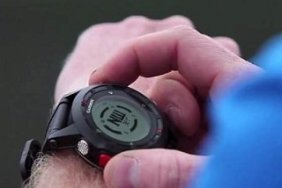 There are many reasons why people hit their local trails. Some love the thrill of exploration and scenic discovery, others the seclusion and simplicity, and there are many who hike and trail run for exercise. Fitness enthusiasts will want to maximize the effects of their workout and a heart rate monitor can help accomplish this task. Today, we’ll take a closer look at these fitness devices, and compare the different types of models available on the market.
There are many reasons why people hit their local trails. Some love the thrill of exploration and scenic discovery, others the seclusion and simplicity, and there are many who hike and trail run for exercise. Fitness enthusiasts will want to maximize the effects of their workout and a heart rate monitor can help accomplish this task. Today, we’ll take a closer look at these fitness devices, and compare the different types of models available on the market.
A heart rate monitor helps fitness nuts by measuring a person's heart rate in real time. This is helpful because the data collected can be used to help maintain optimum training levels during a hike or run.
There are two basic types of heart rate monitors: chest-strap and fingertip. Wireless chest-strap versions transmit signals to a wristwatch receiver and are the most instantaneous, information-rich, and popular option. They provide constant information for maximum workout efficiency. A fingertip heart rate monitor has no straps to wear and looks like a wristwatch. To view your workout data, you simply touch one or two buttons on the face of the device. This tends to be a more comfortable option, but offers less data, less convenience (typically, you must press and hold to get a readout), and is a little less accurate than a chest-strap model.
Whether you go with a chest-strap model or a fingertip one, the products available will vary in quality. Basic level monitors deliver a limited amount of information, such as average, high and low heart rates reached during your workout. However, other data, such as speed and distance, may not be an option.
One level higher, you’ll find models that provide more sophisticated data readouts, such as post-workout feedback that tracks how your performance compares to your fitness goals. Furthermore, wireless, coded chest-straps allow gym workouts to avoid interference from other people's wireless monitors. Some also have optional foot pods that can be strapped to a bicycle or treadmill to give you speed, distance, and cadence. There are even some models that can be connected to a computer for tracking and analyzing workouts.
Lastly, you have the high-end heart rate monitors, which commonly combine the features of typical heart rate monitors with those of speed-and-distance-monitors. These units measure how far and how fast you've trained during your workout, possess GPS functions, and often allow data to be downloaded to your computer.
The trails are a great way to exercise and offer a nice change of scenery from a track or a treadmill at your local gym. To reach your greatest potential, though, a heart rate monitor will be a great help. Hopefully, the tips outlined today will help you choose the monitor that’s best for your needs.








